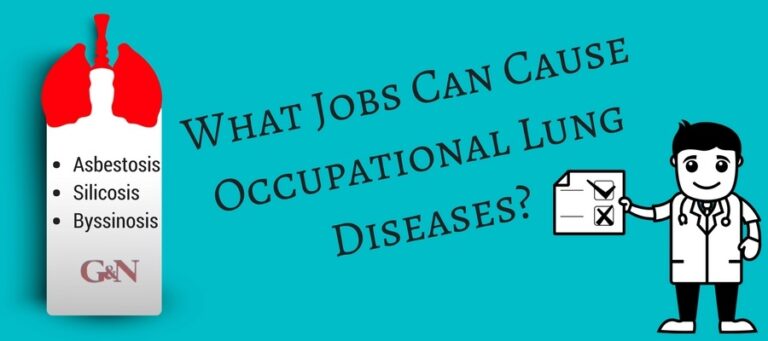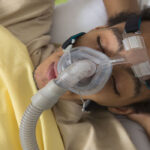Some of the prominent lung diseases are:
- Asbestosis – This condition happens when tiny asbestos fibers go inside your lung and makes the lung tissues stiff and causes scars on the lungs. Those who work on construction sites are more prone to it.
- Silicosis – It is caused when someone is exposed to crystalline silica which comes from drilling, cutting, chipping, grinding of soil, sand, granite and other minerals. Those who work in glass manufacturing, tunnel work, stone cutting are more likely to develop this disease.
- Byssinosis – It is a form of occupational asthma and is a rare lung disease and it is sometimes referred to as Brown Lung Disease. Inhalation of cotton, hemp and flax material causes Byssinosis which causes shortness of breath and tightness of chest. The workers of textile industry are worst affected by this.
Some of the prominent lung diseases include black lung disease (coal Workers’ pneumoconiosis) and hypersensitivity pneumonitis. Both are work-related and can cause life-threatening health complications. These occupational lung diseases are serious and should be treated as effectively and quickly as possible.
Jobs That Can Cause Occupational Lung Diseases
Some of the jobs which are more likely to cause occupational lung diseases:
- Construction Workers – The workers who are involved with drywall products, cement insulation, concrete, sanding, and drilling tools are likely to develop lung diseases. They inhale dust in renovation and demolition work that can cause asbestosis, mesothelioma and lung cancer.
- Welders – The welding process entails working with molten metal that produces toxic fumes which can cause Chronic Obstructive Pulmonary Disease (COPD) and cancer of urinary tract, larynx, and lungs.
- Mining – The workers at mining sites are at a high risk of developing several lung diseases as they are prone to lung ailments such as silicosis, COPD, and pneumoconiosis is known as black lung.
- Aerospace Industry Workers – These workers are exposed to beryllium which causes berylliosis or lung cancer. Some of the symptoms of berylliosis are shortness of breath, weight loss, fatigue and dry cough.
- Factory Workers – The factory workers inhale gasses, chemicals, and dust that can cause COPD. In some cases, it causes bronchiolitis obliterans which is a more serious form of COPD.
How Are Work-Related Lung Diseases Diagnosed?
Symptoms of occupational lung disease can take many years to surface. In the earliest stages, they are often misdiagnosed as the cold or flu. The difference is that the symptoms of occupational lung disease are persistent. Often, the patients suffering from occupational lung disease will stop responding to treatment. Any cough or upper respiratory distress you experience that lasts longer than two weeks should be evaluated by your physician. In order to accurately diagnose your condition, a biopsy, x-ray, or other tests may be required. If a diagnosis is made early enough, you will be able to explore more viable treatment options.
Can Work-Related Lung Diseases Be Prevented?
The only way to really prevent work-related lung diseases is to avoid exposure to the environment and materials that cause them. Even when every precaution is taken by you and your employer, you will still be exposed to some degree of risk. Some professions offer more risks than others. Your future employer must advise you of these risks and also provide as many tools and resources as possible to help limit your exposure. Living a healthy lifestyle and getting a physical examination done every year may help you uncover any work-related lung disease in its earliest stages.
If you have been diagnosed with work-related or occupational lung disease, you should contact an attorney that specializes in workers’ compensation cases, especially those involving occupational lung disease. At Gaylord & Nantais, our attorneys focus on helping clients who are experiencing symptoms of occupational lung disease or other types of work-related injuries get the compensation they deserve. Call and schedule an appointment today if you are experiencing the effects of a work-related injury or occupational lung disease.











